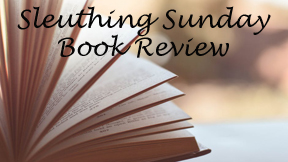In “The Hollow” (1946, also known as “Murder After Hours”), Agatha Christie achieves what she couldn’t quite pull off in “Sparkling Cyanide” one year earlier. Rather than a murder being entertaining and prurient, it hangs over the survivors like a cloud.
Sparkling insights
At the titular country home, we follow several people in romantic entanglements that aren’t for the sake of cuteness or soapiness. We feel the pain of love stories that don’t work out, and the thrill of matches that find a path to success.
Christie’s prose sparkles as she gets deep into the woods with these people who have been invited to the estate by Lady Lucy Angkatell. You could turn to any page and find excellent insights from a character as he or she observes another.

“The Hollow” (1946)
Also published as: “Murder After Hours”
Author: Agatha Christie
Series: Hercule Poirot No. 25
Genres: Mystery, romance, family drama
Settings: London and English countryside, 1946
Meanwhile, Christie never loses sight of the murder mystery. Indeed, Poirot – who buys (I wonder if Christie meant rents, in modern parlance?) a nearby home despite preferring the city life – lets us into his thought process more than usual.
At one point, he openly considers the person who ends up being the killer, although once he has solved the case in his mind, he as usual keeps it from the reader until the dramatic reveal.
Christie is so good at keeping me off balance. If Poirot had not briefly considered this suspect, I would’ve zeroed in on them. Because he does consider the person, my mind went down different paths.
Societal crossroads
“The Hollow” cues its higher literary ambitions early as Henrietta works on a clay sculpture in her London studio. She loves John, who is married to Gerda. Edward loves Henrietta, but also thinks about Midge, with whom he has recently reconnected.
Lucy presides over possible futures for the Angkatell family tree; she’s the story’s glue and most entertaining character. (As is common with Christie yarns, some potential matches — like Edward and Midge — are second cousins, so they’ve known each other since childhood.)
“The Hollow” comes at a crossroads of English societal history. Edward pitches to Midge a comfortable life at the estate he has inherited. Midge is one of those new-fangled women in the workplace, something man-of-leisure Edward struggles to comprehend.
In an unintentionally funny part, Edward observes with shock that Midge works at the dress shop for a 9-hour period (with an hour break in there) every weekday, and can therefore take a vacation only on weekends. What would be considered a stable and desirable schedule today is dreadful to an upper-class Englishman in the 1940s.
Everyone is a fully formed person with a distinct personality. Edward has low self-esteem. Greta suffers from anxiety, as Christie presages a condition that’s more acknowledged in the 21st century. David is bookish, with an unconscious arrogance that sadly keeps him at a distance from people; he’s caught in a vicious cycle.

I love Lucy
Lucy is among Christie’s most outright entertaining one-off characters. The verbose matriarch, who sometimes wakes up her guests simply to talk to them, starts on a topic then pursues it down imagined paths.
Poirot expresses frustration: Lucy paints such plausible pictures of a person’s future behavior that they stick in his mind, interfering with his need to focus on facts.
It’s not only Lucy and Poirot who engage their gray cells. Everyone has their own take on John, a doctor who is obsessed with finding a cure for a rare disease. He is devoted to the idea of providing a stable life for Greta, but he’s not good at expressing love. He perceives his two children at an old-fashioned distance, but those perceptions are on point.
Is John a good or bad person? A good or bad father or husband? Although he’s clearly a skilled doctor, his motives are selfish: He’s engrossed in the quest for a cure like he wants to win a game more so than save lives. By gathering everyone’s point of view, we get the full picture of a man.
By the end, sure, I had enjoyed the mystery and the solution. But more than that, I got to know and care about a group of human beings. “The Hollow” is among my very favorite Christies.
Every week, Sleuthing Sunday reviews an Agatha Christie book or adaptation. Click here to visit our Agatha Christie Zone.

